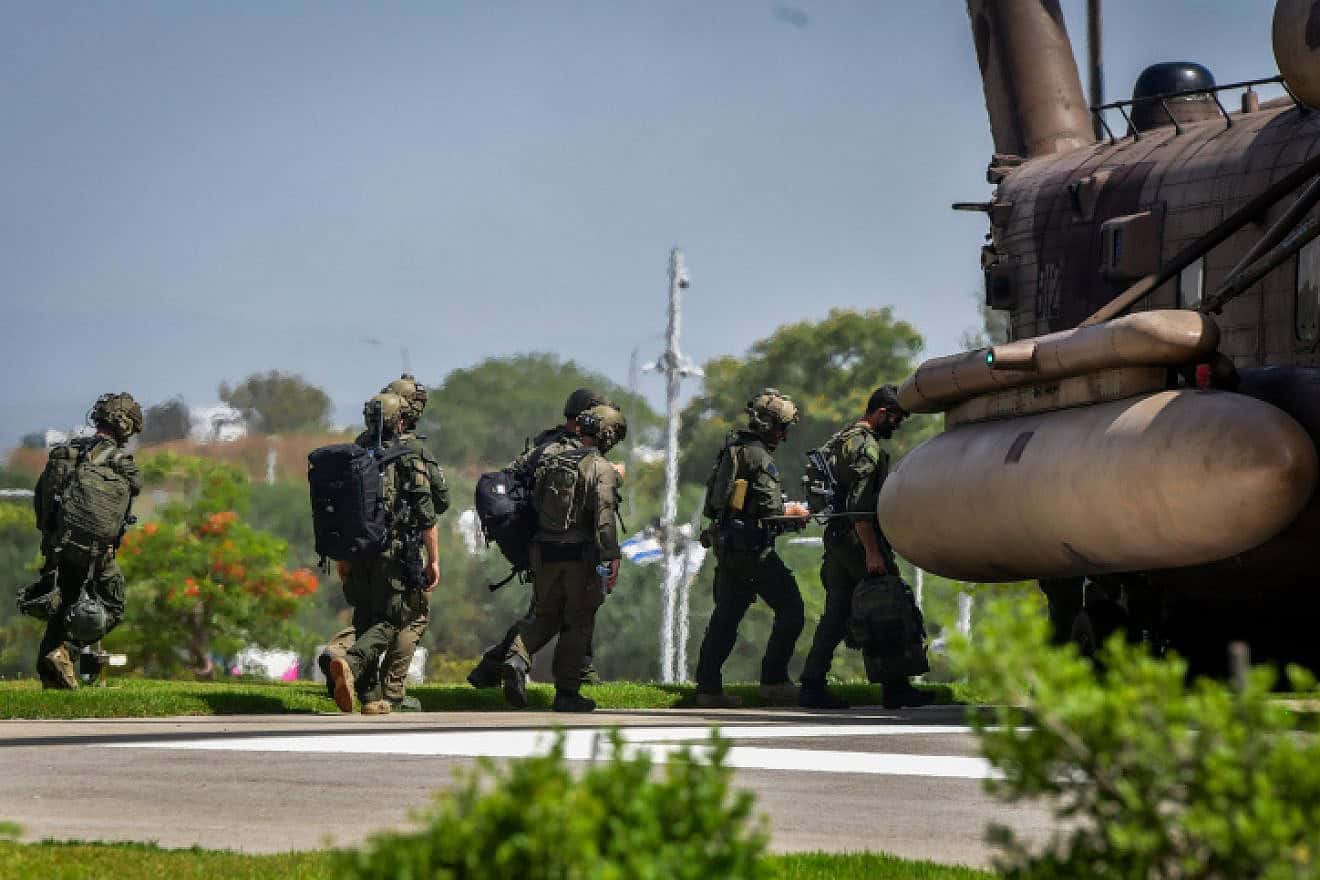by Yaakov Lappin
The military’s growing control of Gaza created conditions for the daring daylight hostage rescue in Nuseirat • Terrorists fired waves of RPGs at the extraction force from civilian areas.
 |
| Israeli special forces who took part in the Nuseirat hostage rescue, at the Sheba Medical Center in Ramat Gan, June 8, 2024. Photo by Avshalom Sassoni. |
Saturday’s hostage rescue operation in central Gaza could not have gone ahead without the Israel Defense Force’s ongoing wider ground maneuver in the Strip, which is improving Israeli intelligence and operational control of the area.
As IDF Spokesperson Rear Adm. Daniel Hagari said on Saturday, “if we didn’t operate in Gaza we could have not conducted this sort of operation.”
The operation was green-lit by Israeli Defense Minister Yoav Gallant, with the approval and oversight of IDF Chief of General Staff Lt. Gen. Herzi Halevi, the head of the IDF’s Intelligence Directorate Maj. Gen. Aharon Haliva and Maj. Gen. (Res.) Nitsan Alon, who heads the special headquarters tasked with gathering intelligence on kidnapped Israelis and MIAs.
The commanders gathered in the Israel Security Agency’s joint operations headquarters, receiving real-time intelligence on multiple screens to help coordinate the operation, which had to be as precise and well-timed as brain surgery.
The mission, conducted in the heart of the Nuseirat neighborhood, involved units from the Israel Defense Forces, with hundreds of troops providing the outer ring of security, the ISA and the Israel Police’s elite National Counter-Terrorism Unit (Yamam).
The operation’s sole Israeli casualty was Chief Inspector Arnon Zamora, 36, a Yamam squad commander. He is survived by his wife and two children.
Noa Argamani (26) was held in one apartment, locked in a room, while Almog Meir Jan (21), Andrey Kozlov (27) and Shlomi Ziv (40) were held in second apartment, in a building 200 meters away, according to Hagari. All four had been kidnapped from the Nova music festival near Kibbutz Re’im on Oct. 7, and were constantly watched by armed Hamas guards.
“Families with guards who had weapons inside the buildings, inside the flats, together, holding the hostages,” said Hagari.
Hamas periodically moved the hostages from one location to another, some of which were above ground and some of which were below. The fact that four hostages were being held above ground relatively close together created a unique opportunity.
At 11:00 a.m., the special forces assault teams got the “go” from Halevi and set out, approaching the two buildings in Nuseirat—a heavily populated civilian area.
At 11:25 a.m., the forces entered both buildings at the same time, engaged the terrorists, and extracted the hostages, with air support.
Had the operation targeted only one of the buildings, the IDF assessed that the Hamas guards in the second building would have killed their hostages, believing a raid was imminent, Hagari explained. “That is the reason why we made this decision,” he said.
The operation had been canceled three times before finally being given the green light, said Hagari.
“We gather the intelligence in multiple ways in order to make sure that we are ready for [an] operation,” he added. As information comes in, commanders need to decide whether or not to wait for more, he explained.
“There are a lot of details, like in a puzzle,” he said. “We may never have all of the links, but we have to make sure that we have enough links to ensure there is leverage.”
The IDF built models of the apartments for special forces to rehearse the rescue, according to Hagari. “The scale of the rehearsals was as large as the [1976] Entebbe operation—[in terms of] the models we used, as well as the way in which we trained, and we had to make sure that everything was done simultaneously,” he said.
Extensive preparations notwithstanding, tensions in the ISA command room were extremely high as the operation got underway, Hagari recalled.
“In Noa Argamani’s building our forces surprised them completely; it was still hard. In the other building, we had crossfires with the guards during which the commander of the squad from the [Yamam] Unit was injured,” he said.
Zamora was evacuated to hospital in critical condition, where he later died of his wounds.
“A very brave warrior,” said Hagari.
At this point in the operation, the word was out and terrorists armed with RPGs were “running in the streets” of the heavily populated residential neighborhood, converging on the rescue force, he continued.
“The cynical way in which Hamas is using [the] civilian population [of Gaza] in order to fire at our forces, embedding themselves within civilians, is tragic,” he stated.
“There was so much fire drawn to our forces, which meant we needed to fire from the air as well as the streets,” he said. “It was done very very professionally and precisely,” he emphasized, adding that the IDF had a pre-planned target bank of terrorist forces in the area.
The successful rescue highlights the high-level integration of Israel’s various security and military organizations, with the IDF, ISA, Yamam and IAF demonstrating their combined capabilities in intelligence gathering, operational planning and execution.
Hagari noted that 120 hostages are still held by Hamas in Gaza, and reaffirmed Israel’s commitment to securing their release.
“We will do everything possible to return all the hostages home. This morning’s operation was not only a success but also an opportunity to fulfill the goals of this war,” he said.
Yaakov Lappin is an Israel-based military affairs correspondent and analyst. He is the
in-house analyst at the Miryam Institute; a research associate at the
Alma Research and Education Center; and a research associate at the
Begin-Sadat Center for Strategic Studies at Bar-Ilan University. He is a
frequent guest commentator on international television news networks,
including Sky News and i24 News. Lappin is the author of Virtual Caliphate: Exposing the Islamist State on the Internet. Follow him at: www.patreon.com/yaakovlappin.
Source: https://www.jns.org/at-the-level-of-entebbe/
No comments:
Post a Comment